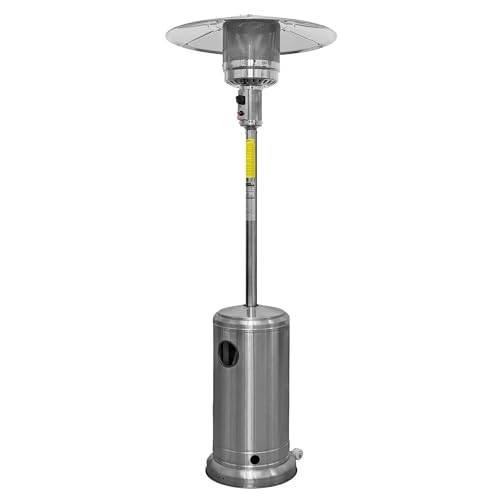The Advanced Guide To Cheap Patio Gas
Cheap Patio Gas Heaters Patio heaters are available in a variety of sizes and styles. Some patio heaters are hardwired and require professional installation. read page on propane or natural gases to warm your patio. The neat, mobile gas cylinders are available in sizes from 5kg green patio bottles up to 13kg red propane cylinders. They can be used with traditional BBQs mobile heaters, mobile barbecues and Ooni pizza ovens. Cost A patio gas heater can increase the value of your home or business and increase the number of people who utilize your outdoor space. It is an inexpensive alternative to other heating systems for outdoor use, like a wood-burning fire pit or propane heaters. A gas heater for patios can also be used indoors to provide a cozy atmosphere during winter. The price of gas for patios varies depending on the type and size of your appliance. For example, a 5-kg bottle of gas for your patio costs around PS28. This includes a 27mm clip-on regulator ** that works with the majority of barbecues and patio heaters. However, some patio heaters require a different regulator. A propane gas cylinder is the best choice for BBQs, pizza ovens and tabletop heaters. It is not odorless and cost-effective. It is easy to move and store. The majority of propane-powered appliances are durable and secure. They are durable and can last for a long period of time. They are a great choice for businesses and homeowners who want to save money. Propane is an eco-friendly, clean-burning fuel that can be used for heating cooking, cooking, and other applications. It is also less expensive than electricity and has lower maintenance costs. It also is less affected when oil prices rise. Efficiency The use of gas patio heaters is an efficient method of heating an outdoor space. They can generate massive heat output and can quickly heat an area up to 215 feet. They do not require installation and are able to be moved easily. They can also be turned off or on with the remote control or programed timers. Some models come with an automatic shut-off function that can stop accidental fires. Butane and propane are two options available when it comes to choosing gas types. Butane is more frigid than propane. Both are LPG, but they differ in their boiling point and the speed of boiling. Butane is generally stored in green cylinders under the name “patio gas” whilst propane is stored in red cylinders. Both kinds of gas can be used with most standard BBQs and patio heaters, and are available at most gardening and home stores. Gas bottles for patios are designed to fit into your BBQ or heater and are available in a range of sizes ranging from 5kg to 13kg. They can be used with standard BBQ regulators and some come with an indicator that informs you that the gas is low. You can save money by using butane in place of propane. Many appliances are able to be converted to run with either fuel. Butane is particularly efficient in warm weather. It is ideal for BBQs, camping gas stoves and portable heaters. However, it is less effective in the winter months since it doesn't flow at extremely low temperatures. It is a fuel that is low in toxicity and has a minimal carbon footprint. This is a great choice for those who are concerned about the environment. When using a gas patio heater it is essential to follow the instructions of the manufacturer on how to operate and maintain the appliance. This includes following the safety guidelines to prevent carbon monoxide poisoning, and making sure that the heater is not exposed to naked flames or high temperatures. Patio heaters should be put in areas with adequate ventilation and not used indoors. Safety  It is essential to consider safety when using propane gas on your patio or hearth. These safety precautions include safe handling and storage as well as the use of Personal Protective Equipment (PPE) and establishing emergency protocols. For instance, cylinders must be stored outdoors in a designated area away from ignition sources, and they should not be moved. If there is a leak the gas must be shut off and the personnel evacuated. Additionally, all cylinders should be clearly labeled with their contents and supplier information. The valve should be able to be opened by hand without any force.
It is essential to consider safety when using propane gas on your patio or hearth. These safety precautions include safe handling and storage as well as the use of Personal Protective Equipment (PPE) and establishing emergency protocols. For instance, cylinders must be stored outdoors in a designated area away from ignition sources, and they should not be moved. If there is a leak the gas must be shut off and the personnel evacuated. Additionally, all cylinders should be clearly labeled with their contents and supplier information. The valve should be able to be opened by hand without any force.